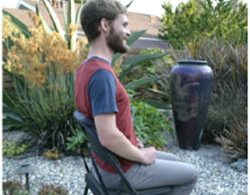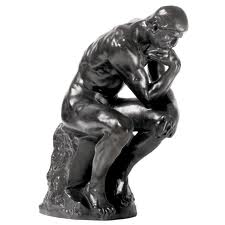The Secrets to Pain-Free Sitting, Part 1: The Inspiration behind a New TV Show
How to Choose a Backrest
Glidewalking: Sitting’s Long-Lost Counterpart
Mother and son in a tribal Orissan village demonstrating excellent walking form. Notice that their heels remain on the floor well into their stride.
Do you have tight psoas muscles? Do you suspect the cause is too much time spent sitting in your daily life? There’s a complementary activity that helps counterbalance the time we spend sitting: walking — or, more specifically, glidewalking. Glidewalking helps balance our sitting in numerous ways — walking is dynamic versus sitting which is static. Yang balances Yin, viewed in the framework of traditional Chinese medicine. One underappreciated way in which walking can balance sitting pertains to the psoas muscle.
The psoas muscle originates on
How to Sit on the Floor, Part 1: Cross-legged Sitting
This is the first post in our multi-part series on floor sitting. For Part 2 on squatting, click here.
Sitting cross-legged on the floor is common in many cultures around the world, and has become popular in some segments of modern Western societies.
This Druze woman who I met in Israel has sat cross-legged all her life. She runs a hospitality business — all the food is laid out on the floor and the guests sit along the periphery of the room. She is at ease in this position for extended periods with her back remaining upright and relaxed.
In this temple in Bhubaneswar, devotees sit cross-legged for extended periods in performing rituals.
These Buddha figures in Thailand show relaxed, healthy
Sitting: Is It Hurting You?
Sitting has been much maligned in the last decade. News sources love to dramatize the issue, and you can find many alarming headlines—such as, “Sitting will kill you, even if you exercise” from CNN in 2015. The debate about the various risks of sitting and possible ways to mitigate them is raging, and articles and research range from “sitting is the new smoking” to “sitting isn’t actually bad for you.”
Sitting: is it bad for you?
In the last few years, some research has seemed to backtrack or qualify the fears of the past, making a distinction between sitting for work versus sitting in front of the TV; news articles have begun to note the higher risks of sitting for those who are obese or
The Story of the Stretchsit® Cushion
Earlier in the history of our company, we didn’t intend to create any posture products and thought education alone would be sufficient. We still stand by our philosophy that education is the most important ingredient in restoring primal posture.
Posture braces, seat cushions, and shirts are not able to take the place of hands-on coaching to establish posture ideals or healthy ways of getting to those ideals. The Gokhale Method trains people on the look and feel of healthy posture; now you can choose aids wisely to support you.
Posture devices as seen above usually induce people to switch from one bad posture (slumping) to another (arching). Most people believe they need to "sit up straight."




